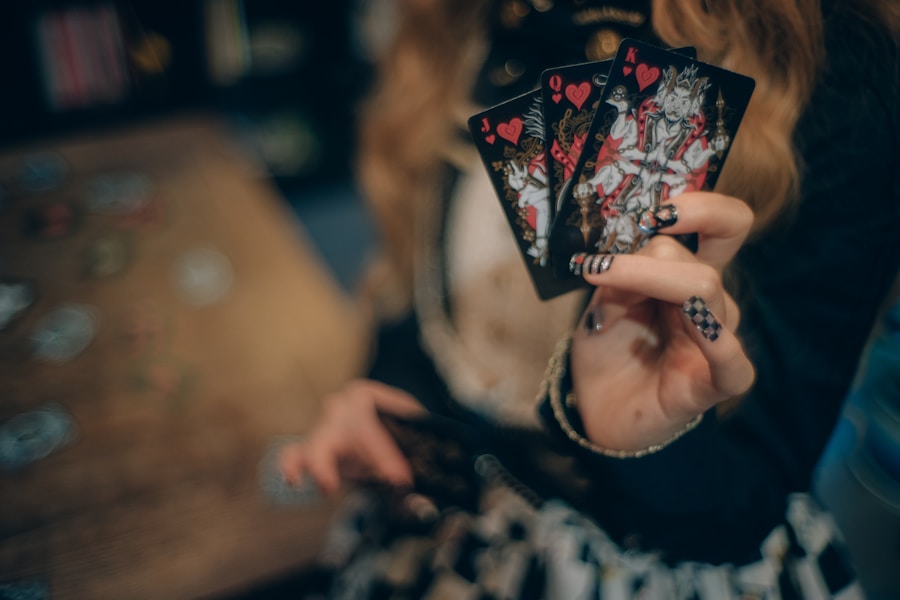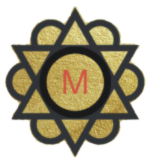
The origins of tarot cards are shrouded in mystery, with their history tracing back to the 15th century in Europe. Initially, tarot cards were not used for divination but rather as playing cards. The earliest known tarot decks, such as the Visconti-Sforza deck, were commissioned by noble families in Italy and featured intricate artwork that reflected the culture and values of the time.
These decks consisted of four suits similar to modern playing cards, along with a set of trumps, which would later evolve into the Major Arcana. The transition from a mere gaming tool to a mystical instrument for divination began in the late 18th century when esoteric scholars and mystics began to ascribe deeper meanings to the cards. As tarot gained popularity, various schools of thought emerged, each interpreting the cards through different lenses.
The Hermetic Order of the Golden Dawn, a secret society founded in the late 19th century, played a pivotal role in shaping modern tarot practices. They introduced the concept of associating each card with astrological symbols, Kabbalistic teachings, and alchemical principles. This fusion of mysticism and symbolism transformed tarot into a profound tool for self-exploration and spiritual guidance.
By the 20th century, figures like Arthur Edward Waite and Pamela Colman Smith further popularized tarot through their iconic Rider-Waite-Smith deck, which remains one of the most widely used decks today.
Key Takeaways
- Tarot cards have a rich history dating back to the 15th century, with origins in Europe as a playing card game before evolving into a tool for divination and spiritual guidance.
- A standard tarot deck consists of 78 cards, divided into the Major Arcana and Minor Arcana, each with its own symbolism and significance in readings.
- When choosing a tarot deck, it’s important to select one that resonates with you and to cleanse it of any lingering energies before use, such as by smudging with sage or using visualization techniques.
- The basics of tarot reading involve shuffling the cards, laying them out in a spread, and interpreting their meanings based on their positions and relationships to each other.
- Common tarot spreads like the Celtic Cross or Three-Card Spread offer different insights and perspectives on specific questions or areas of life, with each card’s placement influencing its interpretation.
- Developing intuition and a strong connection with the cards is key to becoming a skilled tarot reader, and practices like meditation, journaling, and regular card pulls can help strengthen this bond.
Understanding the Structure of a Tarot Deck
A standard tarot deck consists of 78 cards divided into two main categories: the Major Arcana and the Minor Arcana. The Major Arcana comprises 22 cards, numbered from 0 to 21, each representing significant life themes and spiritual lessons. Cards such as The Fool, The Magician, and The World encapsulate archetypal experiences that resonate with the human journey.
The imagery on these cards often conveys deep symbolism, inviting readers to explore their meanings on multiple levels. For instance, The Fool represents new beginnings and potential, while The Tower signifies upheaval and transformation. The Minor Arcana consists of 56 cards divided into four suits: Cups, Pentacles (or Coins), Swords, and Wands.
Each suit corresponds to different aspects of life. Cups are associated with emotions and relationships; Pentacles relate to material matters and finances; Swords symbolize intellect and conflict; while Wands represent creativity and action. Each suit contains numbered cards from Ace to Ten, along with four court cards: Page, Knight, Queen, and King.
These court cards often represent people or personality traits within a reading, adding depth to the interpretation. Understanding this structure is crucial for anyone looking to delve into tarot reading, as it provides a framework for interpreting the cards’ messages.
How to Choose and Cleanse Your Tarot Deck

Selecting a tarot deck is a deeply personal journey that reflects your intuition and aesthetic preferences. With countless decks available today, ranging from traditional designs to modern interpretations, it’s essential to choose one that resonates with you on a personal level. When browsing through decks, pay attention to the artwork, symbolism, and overall energy of the cards.
Some individuals may feel drawn to decks that feature vibrant colors and whimsical illustrations, while others might prefer more subdued or classical designs. It’s also beneficial to consider the accompanying guidebook; some decks come with extensive explanations that can aid beginners in understanding the meanings behind each card. Once you have chosen your deck, cleansing it is an important ritual that helps clear any residual energies from previous owners or environments.
There are several methods for cleansing tarot cards. One popular technique involves using smoke from sage or palo santo to purify the deck. Simply pass the cards through the smoke while setting an intention for clarity and connection.
Another method is to place the deck under moonlight or sunlight for several hours, allowing natural energies to refresh the cards.
Whichever method you choose, ensure that it aligns with your personal beliefs and practices.
The Basics of Tarot Reading
Tarot reading is an art that combines intuition, knowledge of card meanings, and an understanding of the querent’s situation. To begin a reading, it’s essential to create a conducive environment that fosters focus and clarity. This might involve lighting candles, burning incense, or playing soft music—anything that helps you enter a meditative state.
Once you feel centered, shuffle the deck while concentrating on your question or intention. This process not only mixes the cards but also infuses them with your energy. After shuffling, you can draw cards based on your chosen spread—a predetermined layout that guides the reading.
Each position in a spread has a specific meaning that relates to different aspects of the querent’s question or situation. For example, in a three-card spread representing past, present, and future, each card drawn will provide insights into how past experiences influence current circumstances and future possibilities. As you interpret each card, consider both its individual meaning and how it interacts with other cards in the spread.
This holistic approach allows for a richer understanding of the messages conveyed through the cards.
Common Tarot Spreads and Their Meanings
There are numerous tarot spreads available for readers to utilize, each serving different purposes depending on the complexity of the inquiry. One of the most popular spreads is the three-card spread mentioned earlier. This simple yet effective layout can provide quick insights into various situations by examining past influences, current challenges, and future outcomes.
For instance, if someone is seeking guidance on a career decision, the first card might reveal past experiences that shaped their professional path; the second card could highlight present obstacles; while the third card offers potential future developments.
This spread provides a comprehensive overview of a situation by addressing various aspects such as external influences, hopes and fears, and potential outcomes.
Each position in this spread has its own significance; for example, one card may represent immediate challenges while another reflects long-term influences. The Celtic Cross is particularly useful for complex questions where multiple factors are at play, allowing readers to gain deeper insights into intricate situations.
Tips for Developing Your Intuition and Connection with the Cards

Developing intuition is an essential aspect of becoming proficient in tarot reading. One effective way to enhance your intuitive abilities is through regular practice and reflection. Set aside time each day or week to draw a card from your deck without any specific question in mind.
Observe your immediate feelings and thoughts about the card’s imagery and symbolism before consulting any guidebooks or resources. This practice encourages you to trust your instincts and fosters a personal connection with each card. Another valuable technique is journaling about your readings and experiences with tarot.
After each session, take notes on your interpretations, feelings during the reading, and any insights gained from the process. Over time, this practice will help you recognize patterns in your readings and deepen your understanding of how different cards resonate with you personally. Additionally, consider engaging with other tarot enthusiasts through workshops or online communities; sharing experiences can provide new perspectives and enhance your learning journey.
Incorporating mindfulness practices such as meditation can also significantly improve your connection with tarot cards. By quieting your mind and focusing on your breath, you create space for intuitive insights to emerge during readings. Visualization techniques can further enhance this connection; imagine yourself surrounded by light or envisioning a protective aura around you as you engage with your deck.
These practices not only strengthen your intuition but also cultivate a sense of reverence for the wisdom contained within each card. Through these various approaches—choosing a deck that resonates with you, cleansing it thoughtfully, understanding card meanings deeply, practicing regularly, utilizing diverse spreads, and nurturing your intuition—you can embark on a fulfilling journey into the world of tarot reading. Each step taken enhances not only your skills but also your personal growth as you explore the rich tapestry of insights that tarot has to offer.
If you are interested in delving deeper into the meanings of tarot cards, you may want to check out The Meaning and Interpretation of the Tarot Card Judgement article. This article provides insight into the symbolism and interpretation of the Judgement card in tarot readings. Understanding the significance of each card can enhance your tarot reading skills and deepen your connection to the cards. Additionally, if you are curious about the relationship between numerology and tarot readings, you may find Understanding Numerology Marriage Compatibility article to be informative and enlightening. Exploring the connections between numerology and tarot can offer a more comprehensive understanding of the spiritual and mystical aspects of these practices.
FAQs
What are tarot cards?
Tarot cards are a deck of 78 cards that are used for divination, self-reflection, and guidance. They are often associated with fortune-telling and are used by tarot readers to gain insight into a person’s life and future.
What is the history of tarot cards?
The origins of tarot cards are somewhat mysterious, but they are believed to have originated in the 15th century in Europe. The cards were initially used for playing games, but over time, they became associated with mysticism and divination.
How are tarot cards used for readings?
During a tarot reading, the reader shuffles the deck and lays out a specific number of cards in a spread. The cards are then interpreted based on their symbolism, position in the spread, and the reader’s intuition to provide insight and guidance to the querent.
What are the different types of tarot decks?
There are many different types of tarot decks, each with its own unique artwork and symbolism. Some popular decks include the Rider-Waite-Smith deck, the Thoth deck, and the Marseille deck. There are also modern decks with themes ranging from fantasy to nature.
Can anyone learn to read tarot cards?
Yes, anyone can learn to read tarot cards with dedication and practice. While some people may have a natural affinity for tarot reading, it is a skill that can be developed over time through study, meditation, and experience.
Are tarot cards associated with any specific religion or belief system?
Tarot cards are not associated with any specific religion or belief system. They are used by people of various spiritual and religious backgrounds for guidance, self-reflection, and personal growth.






